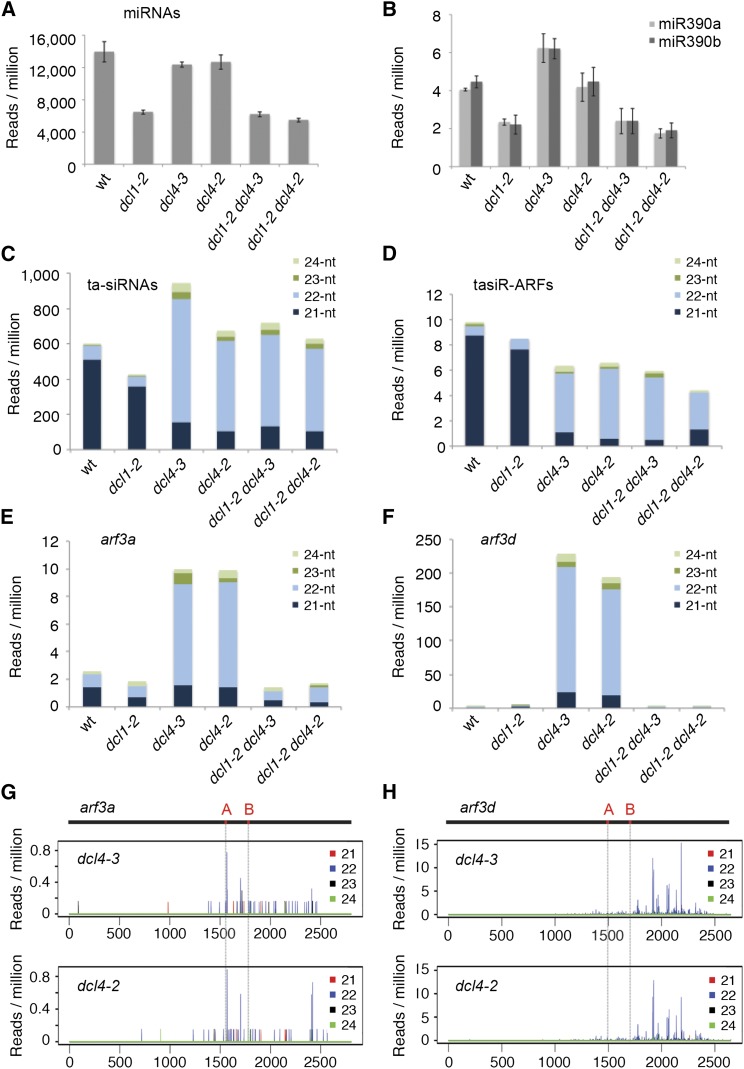Figure 4.
DCL1-Dependent arf3a and arf3d-Derived Secondary siRNAs Accumulate in dcl4 Embryos.
(A) miRNA levels are unchanged in dcl4 but are significantly reduced in dcl1 mutants. miRNA levels in dcl1 dcl4 are comparable to dcl1, indicating that dcl1 is epistatic to dcl4 with respect to miRNA biogenesis.
(B) Similarly, miR390a and miR390b are only reduced in dcl1 and dcl1 dcl4 mutants.
(C) The 21-nucleotide ta-siRNA levels in dcl1, dcl4, and dcl1 dcl4 are significantly reduced relative to the wild type; however, 21-nucleotide ta-siRNA levels between dcl4 and dcl1 dcl4 embryos are comparable. These mutants also accumulate an abundant class of 22-nucleotide ta-siRNAs.
(D) Similarly, the biologically active tasiR-ARFs are significantly reduced in dcl4 and dcl1 dcl4, and these mutants accumulate a novel class of 22-nucleotide tasiR-ARFs that precisely match the canonical 21-nucleotide small RNA in sequence but are extended by one nucleotide. The 21- and 22-nucleotide tasiR-ARF levels are unchanged between dcl4 and dcl1 dcl4.
(E) and (F) dcl4 imbibed embryos accumulate 22-nucleotide arf3a- (E) and arf3d-derived (F) siRNAs that are abolished in the dcl1-2 dcl4 mutants.
(G) and (H) arf3a- (G) and arf3d-derived (H) siRNAs in dcl4-3 and dcl4-2 originate from transcribed regions downstream of the tasiR-ARF target sites.
tasiR-ARF target sites ([A] and [B]) are indicated in red on the arf3 transcripts, and vertical gray lines mark their position relative to siRNA accumulation. Note: P values for individual small RNA level comparisons are listed in Supplemental Tables 3 and 4.

